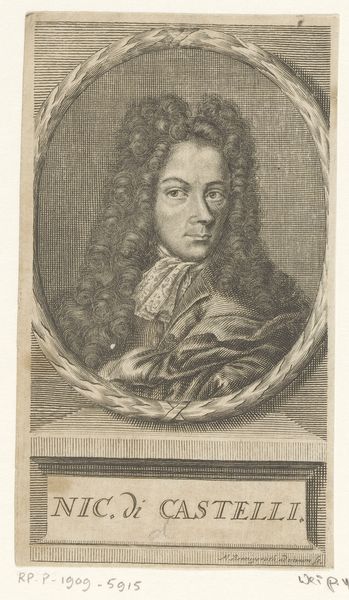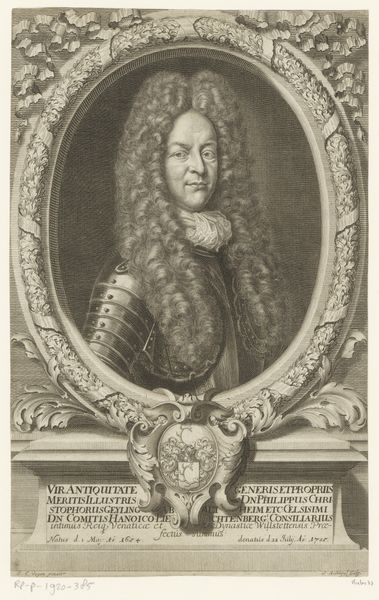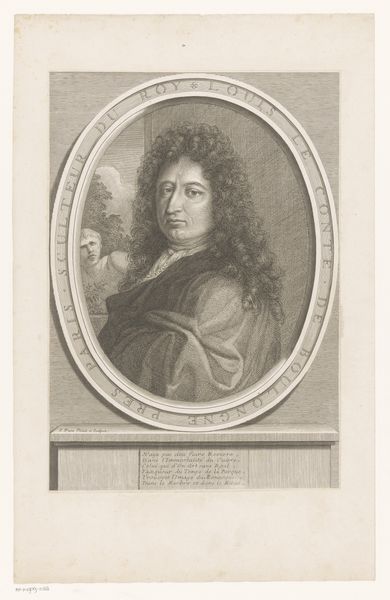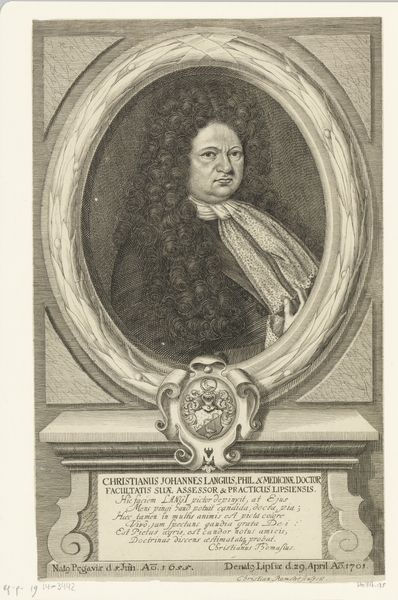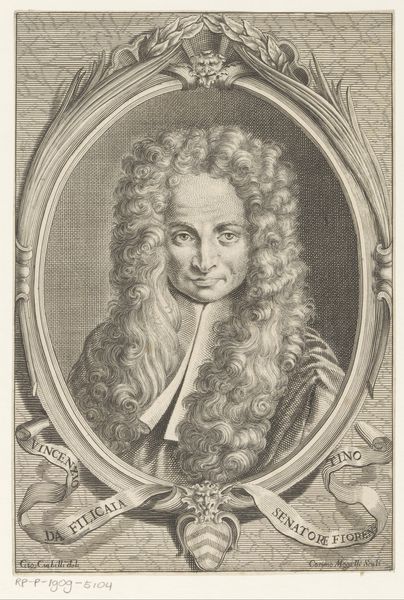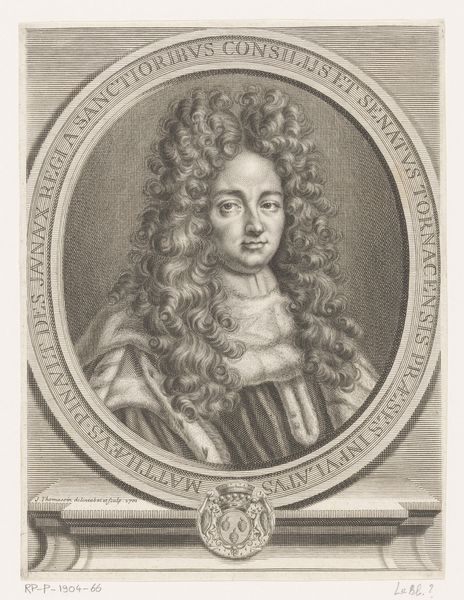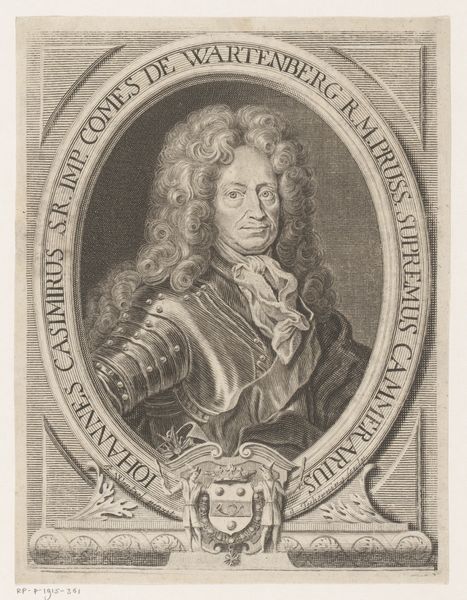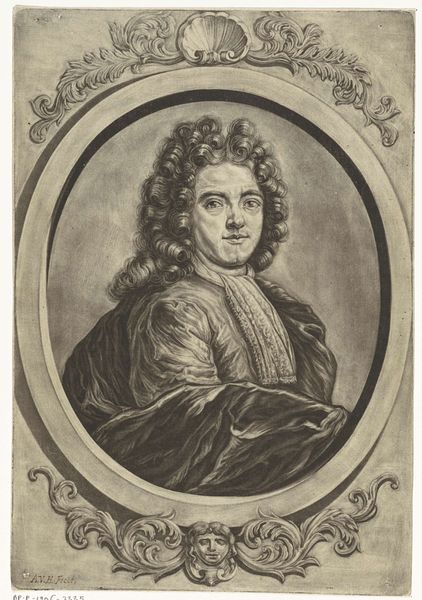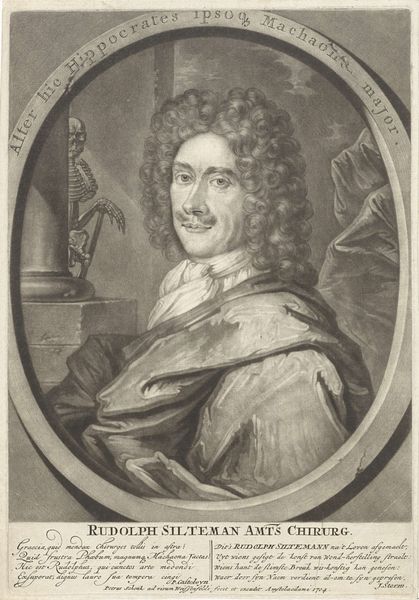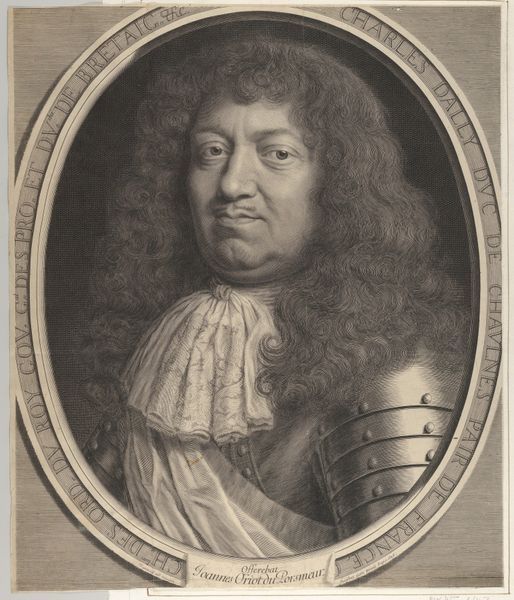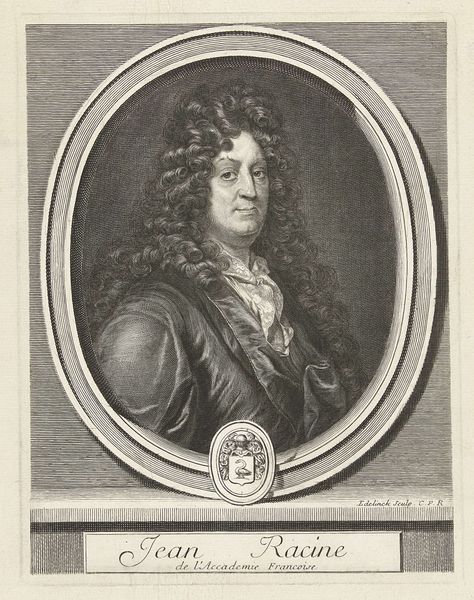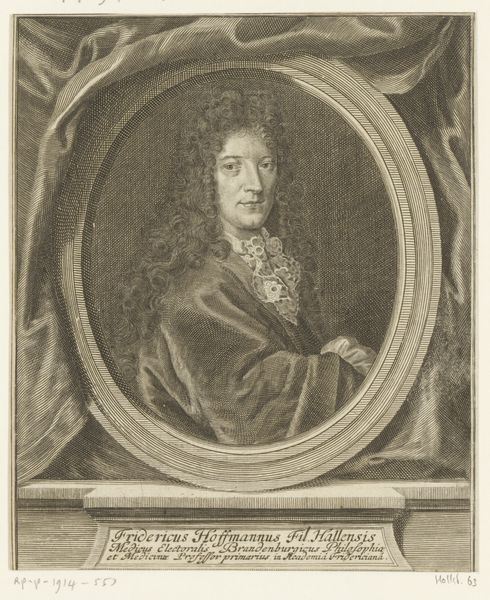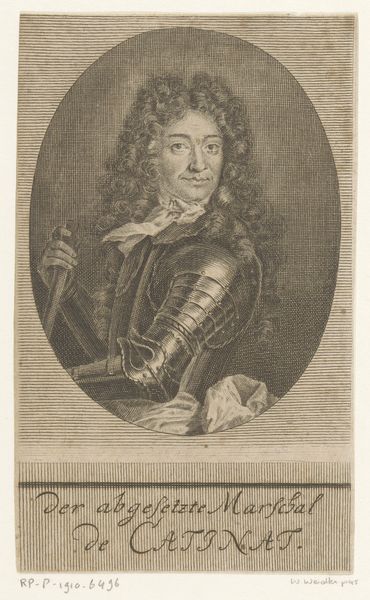
print, engraving
#
portrait
#
baroque
# print
#
old engraving style
#
form
#
line
#
portrait drawing
#
engraving
Dimensions: height 145 mm, width 104 mm
Copyright: Rijks Museum: Open Domain
Curator: This engraving from between 1655 and 1812 is entitled "Zelfportret," or "Self-Portrait," by Johann Christoph Beischlag. It resides here at the Rijksmuseum. Editor: My first thought is one of profound curiosity. There’s a solemnity in the eyes, but also a challenge, like he's asking the viewer what they truly see when they look at him. Curator: Beischlag presents himself in a very particular light, literally. The stark contrast creates depth, drawing the eye immediately to his face, but then diffusing to symbols that support his persona. Editor: Right, there's the Baroque flair with those dramatic curls that signal status and refinement, but then that confident gaze almost rejects the performativity of wealth. How can we understand his intentions? He seems very aware of how he wishes to be portrayed in a historical context that was preoccupied with image. Curator: Look closer. To his right, we glimpse the tools of his trade—palette and brushes—but also a classical sculpture head. The sculpture reflects the weight of tradition, doesn't it? The ideal form from antiquity he seeks to capture or perhaps improve upon, it invites the question what he’s wrestling with visually and perhaps spiritually. Editor: Absolutely. In displaying his tools and inspirations, the work itself feels like a manifesto. This is his attempt to create permanence for his image and stake a claim in art history, asserting a place for himself and perhaps questioning the societal structures of art and representation. We see similar portraits of elite women doing the same in an attempt to access spaces from which they were historically excluded. Curator: It's about asserting agency, visual and creative authority in a time of strict social hierarchies and artistic traditions. He places himself amongst the masters, literally and figuratively, solidifying his presence through carefully chosen symbols that elevate this specific portrait within history itself. Editor: An act of defiance, or rather, measured self-promotion designed to influence posterity. This deep dive highlights the historical tension artists face of pushing creative boundaries in society that simultaneously asks for conformity. I find myself asking: Whose values is he confronting here? Curator: That internal tension, the desire to break molds but needing established forms for reference, feels eternally relevant. This journey with Beischlag is a subtle reminder that art has always navigated self-expression with calculated precision and powerful cultural markers. Editor: A dance of liberation and established form; that friction is maybe what great art is actually about.
Comments
No comments
Be the first to comment and join the conversation on the ultimate creative platform.
